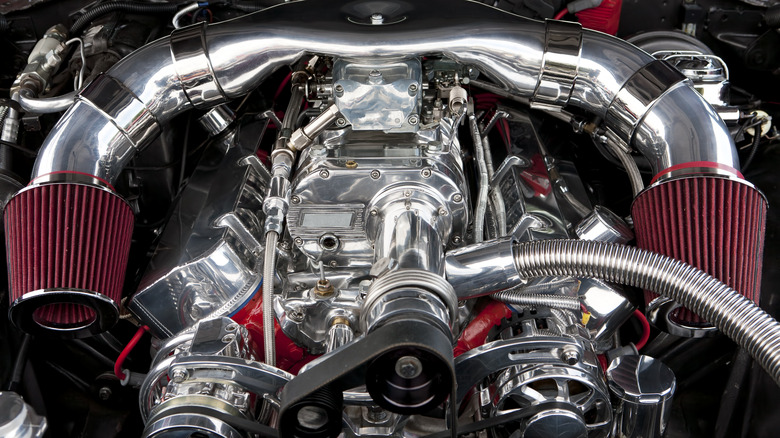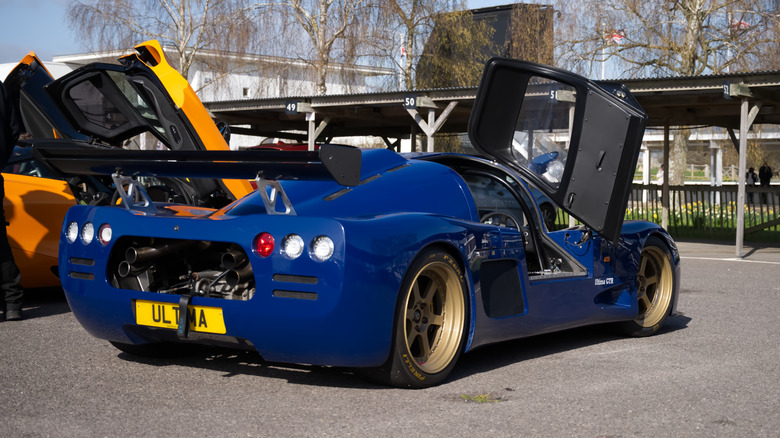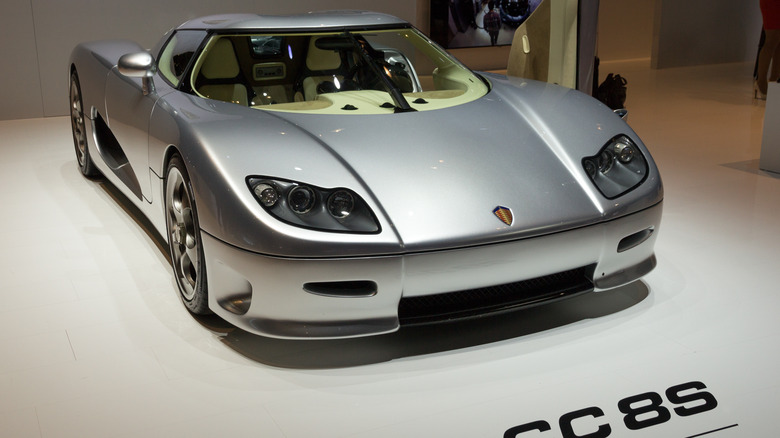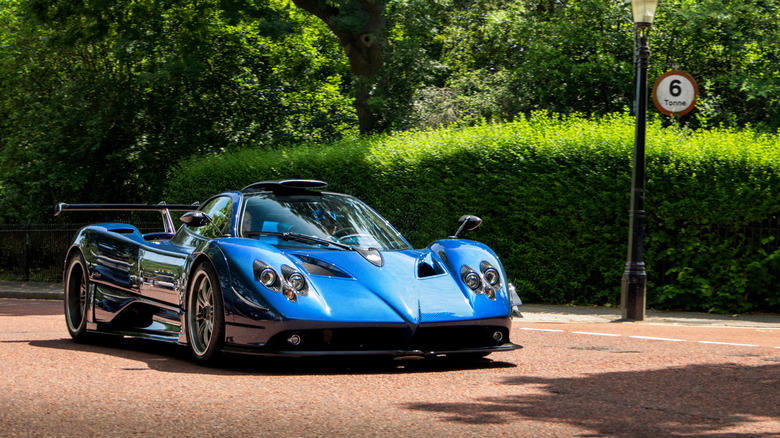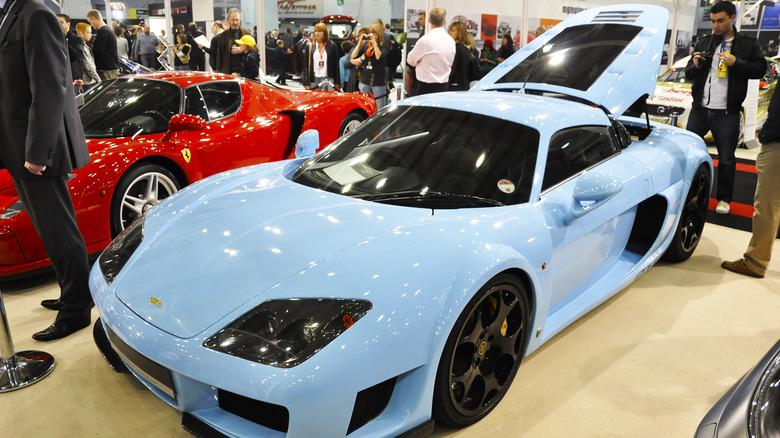Cars You Won't Believe Share The Same Engines
Gas-fired internal combustion engines have been around for more than 160 years. Many historians point to Belgian Jean Joseph Étienne Lenoir as the guy who came up with the first successful commercial engine because he was the first to patent one in 1860 and the first to get them produced in significant numbers.
Over the ensuing century and six decades, as many different engines have been built as there are stars in the night sky. In other words, a lot. So it seems entirely reasonable to assume that from time to time, car makers would utilize things that have already been built. Why reinvent the wheel (so to speak) when you don't have to, right?
Such is the case with the cars we present to you here. Somehow, someway, these very different vehicles share the same power plant under the hood. It may be weird, but at least it makes finding parts easier.
Chevrolet Tahoe and Ultima GTR
We're starting with shock and awe. You're probably saying to yourself — out loud possibly — there's absolutely no way an Ultima GTR supercar (basically a Le Mans race car) has the same engine that's sitting under the hood of your dad's Chevy Tahoe. Well, it's true. Believe it or not.
Ultima Sports Ltd built the GTR between 1999 and 2016, and it is considered the world's quickest accelerating and decelerating supercar ever. It completed a Top Gear test lap 6.2 seconds faster than a Ferrari Enzo and 4 seconds faster than a much pricier Bugatti Veyron SS.
Top speeds and other ancillary stats (i.e., 0-60, quarter mile, etc.) depended entirely on which Chevy V8 sat under the hood because owners could choose from a wide variety with horsepower ranging from 300 to over 1000. For instance, a 2000 model year GTR with a Corvette LS1 V8 was capable of 462 horsepower and 350 ft-lbs of torque, reaching 156.7 mph, while a 2011 GTR with a 5.7-liter produced 355 horsepower and 405 ft-lb of torque with speeds of 185 mph.
In fact, over the years, automakers put the LS line of engines in a myriad of autos, from the usual suspects like Camaros and Corvettes to SUVs such as Cadillac's Escalade, GMC's Yukon and, of course, the Tahoe.
Ford Crown Victoria and Koenigsegg CC8S
Ford's "Crown Vic" is best known for serving as the vehicle of choice for virtually every police department in the United States for most of the '90s through the first decade of the '00s. So it might be surprising to know that its engine (albeit slightly modified) is also tucked inside one of the rarest hypercars on the planet.
Manufactured between 2002 and 2003, the CC8S was, in fact, the Swedish car maker's first production car. A total of six were made, thus making it one very rare Koenigsegg indeed.
That first handful of cars used a 4.7-liter supercharged Ford Modular motor because why reinvent the wheel if you don't have to? However, the company wasn't pleased that they had to tune and modify it so much that it made the engine both "unreliable and dirty" because it had to use race gas to achieve the high performance it demanded.
The standard engine in a Crown Vic was a SOHC 4.6-liter V8 kicking out 250 horsepower with 297 lb-ft of torque. The modified version of that engine in the CC8S has far beastlier numbers — 646 horsepower and 553 lb-ft of torque. It goes from 0 to 62 in 3.5 seconds, scoots across the quarter-mile in 10 seconds, and has a top speed of 240 mph. By comparison, it took the Crown Vic 8.7 seconds to reach 60 and had a top speed north of 130 mph.
Mercedes-Benz S-Class and Pagani Zonda
In 1991 Mercedes unveiled its first V12 engine — the M120. It has become regarded as one of the best V12 engines ever built and was the engine that powered its S-Class luxury sedan line for decades. That first iteration was a 6.0-liter, naturally-aspirated V12 operating at 389 horsepower and 420 lb-ft of torque and came with a top speed of 155 mph.
In 1994, Argentine-Italian businessman and auto engineer Horacio Pagani signed a deal with Mercedes Benz to provide this nearly identical M120 to be used as the power plant under the hood of its first Pagani Zonda supercar in 1999. After some tweaking, the mid-mounted V12s in those first C12s produced 394 horsepower and 420 lb-ft of torque and could get to 60 mph in 4.2 seconds, and had a top speed of 185 mph.
Mercedes continued to provide Pagani with engines throughout Zonda's entire production run, with the final year 2019 models rocking 7.3-liter AMGs (M297 engine) in the Zonda Revolución pushing 789 horsepower and 538 lb-ft of torque.
Volvo XC90 and Noble M600
The Swedish luxury XC90 SUV from Volvo and the British M600 supercar from Noble share the same base 4.4-litre V8 engine. In fact, it was Volvo's very first V8 engine, released in 2005, which is shocking considering the company was founded way back in 1927. You'd think a company with the letter v in its name twice would have produced a V8 much sooner.
The M600's engine may have started as a Volvo B8444S V8, but after Yamaha got done tinkering with it and adding twin Garrett turbochargers (with variable boost), it said goodbye to the street-legal SUV power plant. The Yamaha Judd V8 kicked out an astonishing 652 horsepower and 604 lb-ft of torque. The carbon fiber composite body and stainless sheet steel tub with tubular space frame chassis gave the car a light curb weight of 2,641 pounds, reaching a top speed estimated at 225 miles per hour.
Try going that fast in an XC90 and see what happens.
